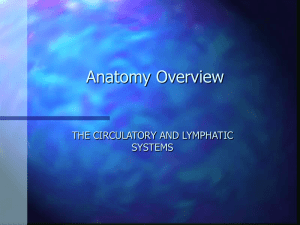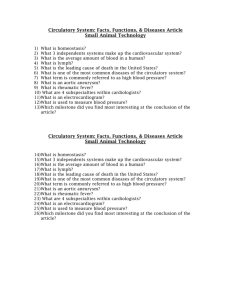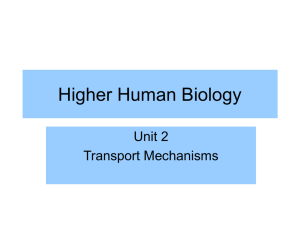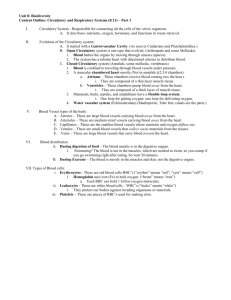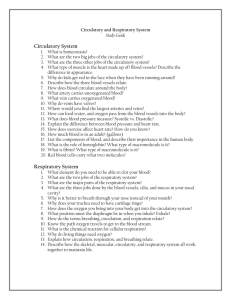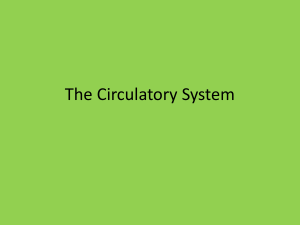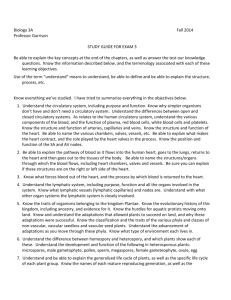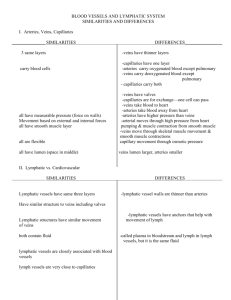File - Pamela`s E-Portfolio
advertisement
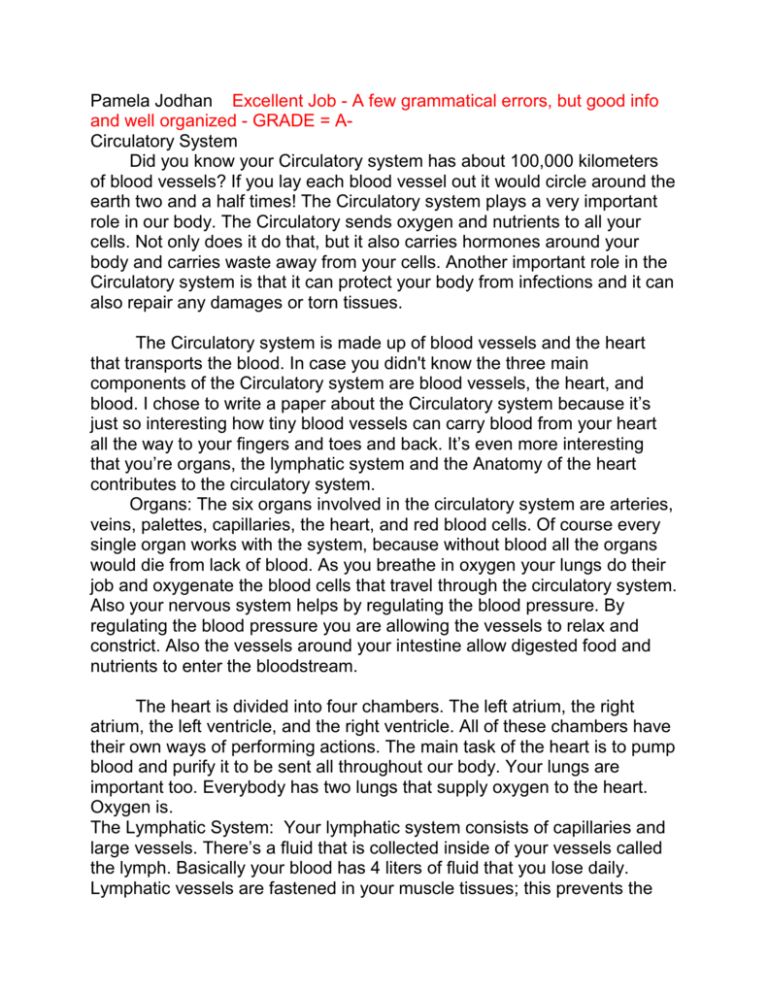
Pamela Jodhan Excellent Job - A few grammatical errors, but good info and well organized - GRADE = ACirculatory System Did you know your Circulatory system has about 100,000 kilometers of blood vessels? If you lay each blood vessel out it would circle around the earth two and a half times! The Circulatory system plays a very important role in our body. The Circulatory sends oxygen and nutrients to all your cells. Not only does it do that, but it also carries hormones around your body and carries waste away from your cells. Another important role in the Circulatory system is that it can protect your body from infections and it can also repair any damages or torn tissues. The Circulatory system is made up of blood vessels and the heart that transports the blood. In case you didn't know the three main components of the Circulatory system are blood vessels, the heart, and blood. I chose to write a paper about the Circulatory system because it’s just so interesting how tiny blood vessels can carry blood from your heart all the way to your fingers and toes and back. It’s even more interesting that you’re organs, the lymphatic system and the Anatomy of the heart contributes to the circulatory system. Organs: The six organs involved in the circulatory system are arteries, veins, palettes, capillaries, the heart, and red blood cells. Of course every single organ works with the system, because without blood all the organs would die from lack of blood. As you breathe in oxygen your lungs do their job and oxygenate the blood cells that travel through the circulatory system. Also your nervous system helps by regulating the blood pressure. By regulating the blood pressure you are allowing the vessels to relax and constrict. Also the vessels around your intestine allow digested food and nutrients to enter the bloodstream. The heart is divided into four chambers. The left atrium, the right atrium, the left ventricle, and the right ventricle. All of these chambers have their own ways of performing actions. The main task of the heart is to pump blood and purify it to be sent all throughout our body. Your lungs are important too. Everybody has two lungs that supply oxygen to the heart. Oxygen is. The Lymphatic System: Your lymphatic system consists of capillaries and large vessels. There’s a fluid that is collected inside of your vessels called the lymph. Basically your blood has 4 liters of fluid that you lose daily. Lymphatic vessels are fastened in your muscle tissues; this prevents the lymph fluid from flowing back towards the capillaries. When your lymphatic system gets bigger in the lymph tissue it’s called lymph nodes. Lymph nodes are very important because the help to defend your body against infections. These lymph nodes contain cells that destroy bacteria and viruses. When you get sick or have the flu have you ever felt pain or swelling on your neck? Well your lymph nodes are swollen because their huge clumps of nodes that have cells that are there to fight infections. The lymphatic systems role is to fight infections. However, the lymphatic system isn't always this kind to our body. There are many things such as diseases that can occur because of the lymphatic system. For instance, Lymph edema is a disease cause by the lymph fluid that isn't working for is damaged. This causes your limbs and other joints to swell up, which may lead to cancer or surgery. The Anatomy of the Heart: There is a pump that is located in the middle of your lungs; there is also a sac that encloses the heart called the Pericardium. As we learned in the Lymphatic system the heart has four chambers. So in more details the two upper chambers have thin walls that collect blood and carry it back to the heart, these two top chambers are called the atria. The two lower chambers have thick walls that pump the blood out of the heart; these two bottom chambers are called ventricles. The Heart is important in the circulatory system because each chamber has a role that passes oxygen all throughout our body. The left atrium which is one of the top chambers gathers oxygen that is pumped down to the bottom left ventricle. Then after that process the blood goes is pumped to the aorta which carries the blood and all the nutrients and oxygen to the cells. Valves prevent our blood from returning backwards. These valves are located between the atria and the ventricles. When your feel your heart beating, it’s your valves opening allowing the blood to flow through. When you listen to your heart beat and you hear a thump are the valves closing back. Then there is the peacemaker. The peacemaker is inside the wall of the right atrium this muscle sets your heart rate. In other words the peacemaker is the battery for the heart. It allows the heart to pump and help it function much better. Scientist at Harvard University discovered at protein that is able to transform your organs back to a healthy stage. They tested this protein on an older mouse that has the most common type of heart disease. They injected a mouse’s bloodstream with parabiosis. By doing this study they found that the older mouse was able to converse the younger mouse’s order around. Then they injected the older mouse with the same thing and it had the same positive result.


